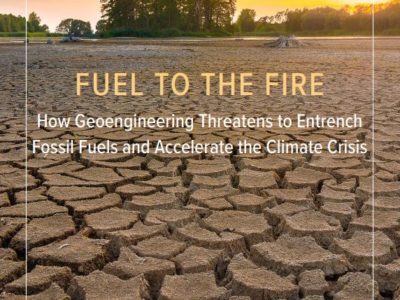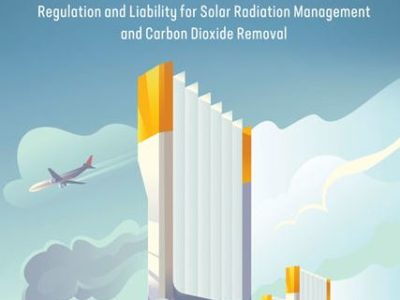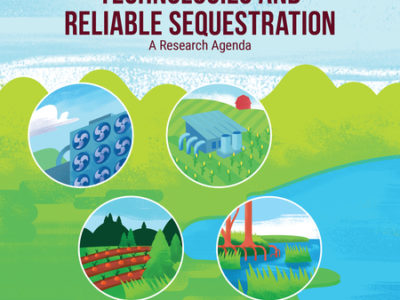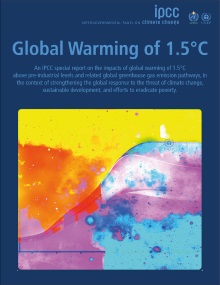Geoengineering
Sixth International Geoengineering Governance Summer School, 2019
A brief report from a recent Emmett-convened event
As the severity of climate change risks and the inability of current efforts to adequately limit risks become clear, geoengineering technologies – active large-scale environmental interventions to reduce disruptions caused by elevated greenhouse gases – are increasingly receiving attention and generating controversy. These proposals would either remove and sequester atmospheric carbon dioxide or modify the …
Continue reading “Sixth International Geoengineering Governance Summer School, 2019”
CONTINUE READINGUncovering the Origins of False Claims in the Solar Geoengineering Discourse
The story behind a recent news article reveals how activist groups—with the media’s help—cause misleading and false assertions to arise, persist, and spread.
Originally posted at Harvard’s Solar Geoengineering Research Program. Much of my work concerns solar geoengineering, a set of proposals to block or reflect a small portion of incoming sunlight in order to reduce global warming. Unfortunately, the discourse is rife with specious, misrepresented, and outright false statements – many of which are consistent with intuition – …
Continue reading “Uncovering the Origins of False Claims in the Solar Geoengineering Discourse”
CONTINUE READINGThe Governance of Solar Geoengineering: Managing Climate Change in the Anthropocene
My book is now available!
I interrupt my ongoing blog series on new biotechnologies and their governance (1, 2, 3) to announce that my book The Governance of Solar Geoengineering Managing: Climate Change in the Anthropocene is available today from Cambridge University Press. The brief description is: Climate change is among the world’s most important problems, and solutions based on …
CONTINUE READINGGoverning Geoengineering at the United Nations? No, at Least Not Now
A proposed resolution falters at the UN Environment Assembly
At this week’s UN Environment Assembly, countries’ representatives debated a draft resolution regarding climate geoengineering. Unable to come to agreement, it was withdrawn Wednesday. This is not surprising to me, as — for the most part — leaders presently lack political incentives to take action. I am also not particularly disappointed, because a counter-productive resolution seemed fairly …
Continue reading “Governing Geoengineering at the United Nations? No, at Least Not Now”
CONTINUE READINGDoes the Fossil Fuel Industry Support Geoengineering?
A misleading new report from Center for International Environmental Law and the Heinrich Boell Foundation demeans the discourse
Geoengineering is controversial in the climate change community, and understandably so. Proposed interventions like negative emissions technologies (a.k.a. carbon dioxide removal) and solar geoengineering (a.k.a. solar radiation management or SRM) — which some writers group together as “geoengineering” — involve large-scale intervention in the climate system that could have adverse physical or social impacts. At …
Continue reading “Does the Fossil Fuel Industry Support Geoengineering?”
CONTINUE READINGDon’t Believe Everything That You Read
Solar geoengineering is often inaccurately portrayed in the media
If you had followed the climate change news over the weekend, you might have been shocked to see headlines such as “Scientists Prescribe a Healthy Dose of Sulphate Particles to Promote Global Cooling on the Cheap.” CNN tweeted that “Harvard and Yale scientists are proposing that we tackle climate change by dimming the sun.” And …
Continue reading “Don’t Believe Everything That You Read”
CONTINUE READINGSolar Geoengineering and International Law
May states intentionally alter the entire planet’s climate?
A couple weeks ago, I introduced solar geoengineering (see also 1, 2, 4 in the series). This is a set of proposed technologies that would reduce climate change by blocking or reflecting a small portion of incoming sunlight. It appears that it would be effective in reducing climate change, inexpensive, rapid, and technically feasible. It would …
Continue reading “Solar Geoengineering and International Law”
CONTINUE READINGNegative Greenhouse Gas Emissions, the National Academies, and the Law
What does the scaling-up of negative emissions technologies for environmental law?
In my previous posts , I described how most emissions scenarios that are expected to keep warming within 2 or 1.5°C rely on negative emissions technologies (NETs) at large scales and how the new report from the Intergovernmental Panel on Climate Change addresses NETs (as well as how solar geoengineering could offer an additional means to …
Continue reading “Negative Greenhouse Gas Emissions, the National Academies, and the Law”
CONTINUE READINGAnother Possible Means To Keep Global Warming Within 1.5 Degrees Celsius
Did the IPCC bury the lede regarding solar geoengineering?
In my previous posts on the reports of the Intergovernmental Panel on Climate Change (IPCC), I described how models assume the use of uncertain negative emissions technologies at very large — if not impossible — scales in order to keep global warming within 1.5 or two degrees Celsius (1, 2; see also my colleague Julia …
Continue reading “Another Possible Means To Keep Global Warming Within 1.5 Degrees Celsius”
CONTINUE READINGNegative Emissions Technologies in the New Report on Limiting Global Warming
The new Intergovernmental Panel on Climate Change report on 1.5°C warming relies heavily on negative emissions technologies.
Last week, I described how the scenarios expected to keep global warming within the 2°C target, which was internationally endorsed in the Paris Agreement, had to assume the use of negative emissions technologies at very large scales. The Intergovernmental Panel on Climate Change (IPCC), an international assessment body, downplayed this essential fact in its most recent major report, …
Continue reading “Negative Emissions Technologies in the New Report on Limiting Global Warming”
CONTINUE READING











